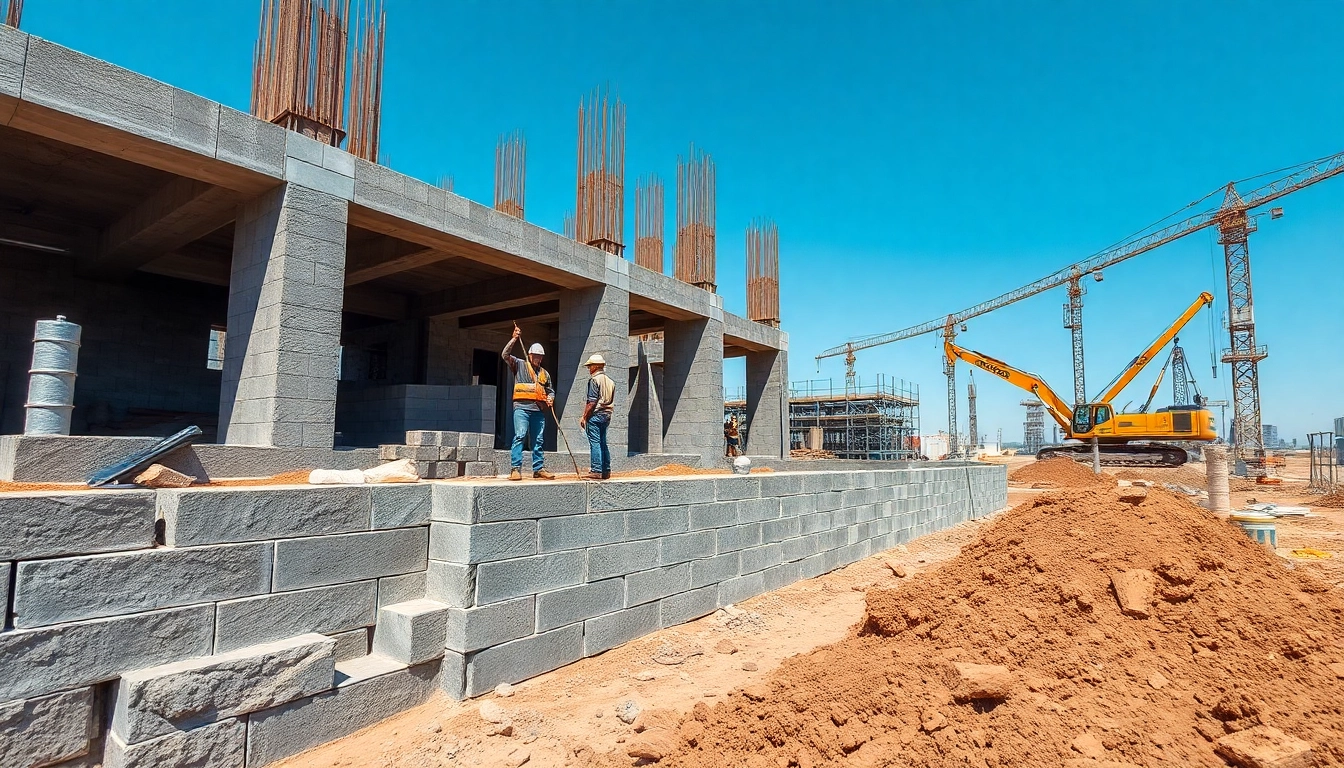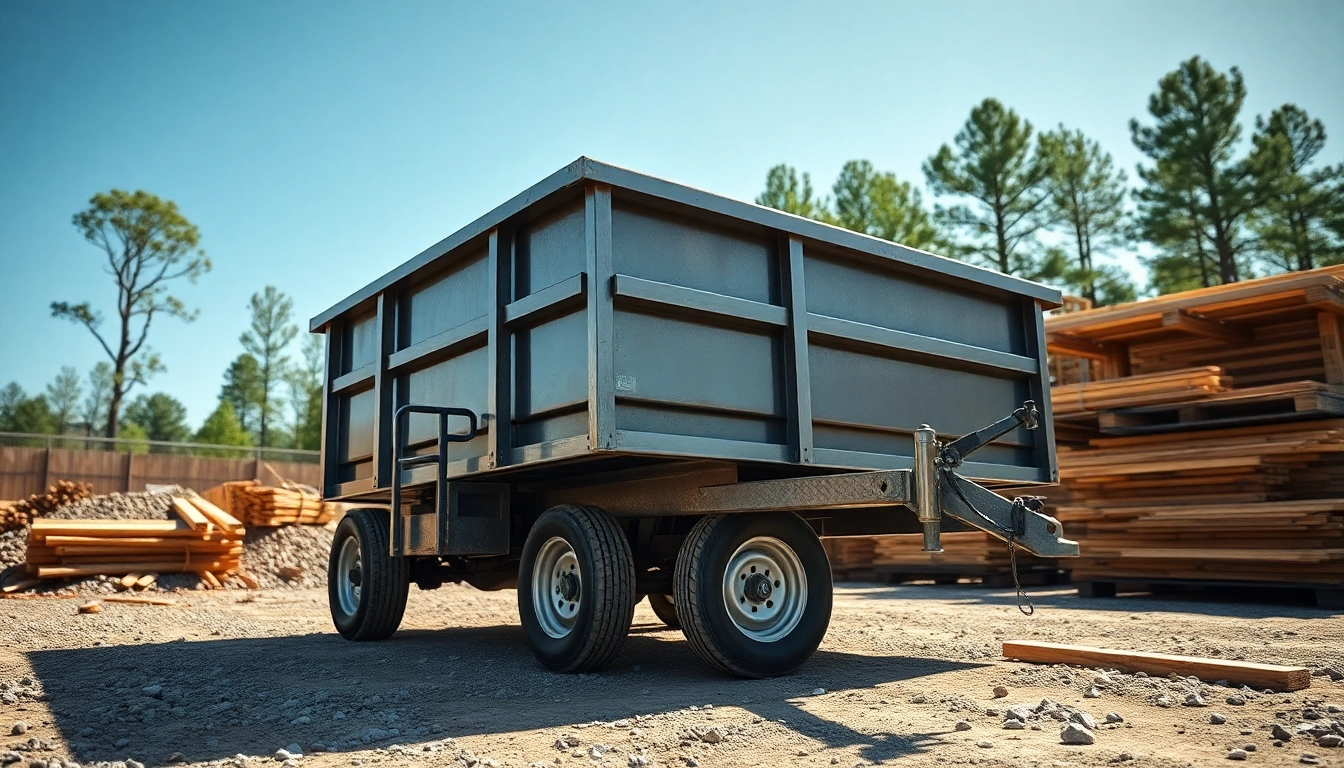Understanding Footing and Block Walls
What Are Footing and Block Walls?
Footing and block walls are fundamental components in the construction of various structures, providing essential support and stability. A footing refers to the structural element that transfers the load from the structure above to the soil below. It is typically made of concrete and is placed below the frost line to prevent shifting during freeze-thaw cycles. Block walls, on the other hand, are walls constructed using concrete blocks (also known as masonry blocks) which are known for their durability, strength, and versatility.
Footings and block walls are often interconnected in construction; the footing provides a solid base for the block walls, ensuring they remain level and can effectively support loads. For those looking to learn more about footing and block walls, understanding these components is crucial for any building or renovation project.
Importance of Footing in Construction
The importance of footings cannot be overstated in construction. Footings serve several critical functions including:
- Load Distribution: Footings distribute the weight of the structure widely across the soil, helping to prevent settling or shifting.
- Frost Protection: In colder climates, footings are placed below the frost line to prevent damage from ground movement during freeze-thaw cycles.
- Stability: By anchoring the structure to the ground, footings contribute immensely to the stability and integrity of the building.
Moreover, improperly designed or installed footings can lead to catastrophic failures, making their proper implementation essential for the longevity and safety of any structure.
Types of Block Walls Explained
Block walls can be categorized into various types, each suited for different applications. Here are the most common types:
- Concrete Block Walls: These are the most widely used, made from molded concrete blocks that provide strong structural support.
- CMU Walls (Concrete Masonry Units): These are a variation of concrete blocks specifically designed for structural applications, often used in load-bearing situations.
- Retaining Walls: Designed to hold back soil, these block walls prevent erosion and are vital for sloped properties.
- Insulated Concrete Forms (ICFs): These blocks combine insulation and concrete for energy efficiency and are becoming increasingly popular in residential construction.
Each type of block wall has its benefits and may be chosen based on specific project requirements, making it important to evaluate your needs carefully.
Benefits of Using Block Walls
Strength and Stability of Block Walls
One of the most significant benefits of block walls is their inherent strength and stability. Concrete blocks are designed to withstand immense pressure and heavy loads, making them ideal for a wide variety of structural applications. Their interlocking design adds lateral stability, further enhancing the wall’s ability to cope with wind loads and other forces.
In comparison to wood and other materials, block walls provide superior resistance to pest infestations, fire, and decay, thereby prolonging the lifespan of a structure.
Energy Efficiency Advantages
Block walls also promote energy efficiency. The thermal mass of concrete blocks allows them to absorb heat during the day and release it slowly at night, contributing to a stable internal environment. This quality can significantly reduce heating and cooling costs, making block walls an environmentally friendly option. Additionally, ICF block walls offer both insulation and structural benefits, making them an excellent choice for energy-efficient homes.
Design Flexibility with Block Walls
Another key advantage of block walls is the design flexibility they afford. Concrete blocks can be painted, textured, or finished in various ways to suit the aesthetic needs of a project. Whether for residential, commercial, or industrial uses, block walls can be tailored to match any design vision.
Moreover, due to their modular nature, block walls can be easily resized or shaped to fit unique architectural layouts, enhancing creativity in design planning.
Proper Techniques for Installing Footing and Block Walls
Preparing the Site for Installation
Before installing footings and block walls, thorough site preparation is necessary. This involves clearing the area of vegetation, debris, and any obstructions, and performing soil tests if necessary. Soil testing will reveal the type of soil present, its stability, and whether any changes or improvements are required before construction begins.
Proper drainage planning is also crucial at this stage; ensuring that water flows away from the foundation will prevent water pooling and reduce the risks of structural damage.
Key Steps in Footing Installation
The process of installing footings typically includes the following steps:
- Excavation: Digging trenches according to the design specifications and ensuring the required depth.
- Formwork Installation: Setting up forms to contain the concrete until it hardens.
- Reinforcement: Placing steel rebar within the forms to enhance strength.
- Pouring Concrete: Filling the forms with concrete and using vibrators to eliminate air pockets.
- Curing: Allowing the concrete to cure properly, which usually takes about seven days for initial strength development.
Following these steps ensures a robust foundation for the block walls to be subsequently built upon.
Block Wall Construction Best Practices
When constructing block walls, adhere to the following best practices to ensure durability and alignment:
- Use Quality Materials: Select high-quality concrete blocks that meet local building codes.
- Mortar Application: Apply an even layer of mortar between blocks, using a trowel for consistency.
- Stagger Joints: When laying multiple courses of blocks, stagger the joints for added strength.
- Regularly Check Levels: Continuously check vertical and horizontal levels during construction to maintain alignment and prevent structural failures.
- Provide Adequate Curing: Follow a curing schedule for the mortar and blocks to ensure optimal strength.
Implementing these practices promotes long-lasting and resilient structures.
Common Challenges in Installing Footing and Block Walls
Identifying and Addressing Soil Issues
Soil conditions play a critical role in the success of footings and block walls. Common soil issues include inadequate bearing capacity, expansive clay, and fill soils with unstable characteristics. Identifying these problems beforehand is crucial, as they can lead to significant structural issues down the line.
To address soil problems:
- Conduct Soil Tests: Test the soil to assess its bearing capacity and composition.
- Consider Soil Enhancements: Employ soil stabilization methods (like compaction or chemical treatments) to improve performance.
- Redesign Footings: Modify footing sizes or depths based on soil analysis to ensure adequate support.
Taking these steps can help mitigate potential soil-related challenges before construction begins.
Managing Water Drainage Around Footings
Water management is essential during construction. Adequate drainage around the footings prevents water accumulation, which can weaken the foundation and lead to costly repairs. Here are effective strategies to manage drainage:
- Install French Drains: Setting up a system of perforated pipes to redirect water away from footings.
- Create Drainage Pits: Digging pits or channels that can naturally guide excess water away from the foundation area.
- Utilize Grading: Ensure the site slopes away from building foundations to facilitate water movement.
By proactively controlling water flow, the integrity of the footings and walls can be safeguarded against water-related damage.
Ensuring Accurate Wall Alignment and Leveling
Accurate wall alignment and leveling are critical to the overall stability and aesthetics of block walls. Common issues include uneven block placements and misalignments caused by inadequate measurements. To ensure precision:
- Frequent Measurements: Use a level and measuring tape throughout construction to check for alignment.
- Utilize String Lines: Install string lines along the wall to guide block placements.
- Check for Square: Regularly verify that corners are square to maintain the wall’s structural integrity.
By paying attention to these details, builders can avoid misalignments that could compromise the overall structure.
Maintaining Footing and Block Walls Over Time
Signs of Wear and Tear to Watch For
Like any structural element, footings and block walls can experience wear and tear over time. Homeowners and builders should be vigilant and watch for signs such as:
- Cracks in Walls: Small or large cracks can indicate structural issues or settling.
- Moisture Seepage: Water marks or mold growth inside or outside the walls suggest possible drainage issues.
- Uneven Floors: A shifting foundation may lead to sloping or uneven floors in the structure.
Addressing these signs promptly can help mitigate further damage and preserve the structural integrity of the building.
Regular Maintenance Tips for Longevity
To optimize the lifespan of footings and block walls, regular maintenance is essential. Consider the following tips:
- Seal Cracks Promptly: Use appropriate sealants to fill any cracks as soon as they appear.
- Check Drainage Systems: Periodically inspect and maintain drainage systems, ensuring they function correctly and remain free of obstructions.
- Monitor for Moisture: Look for signs of moisture buildup and address any leaks in plumbing or roofing.
- Landscaping Adjustments: Ensure that landscaping and vegetation do not trap water against the walls or footings.
By adopting these proactive measures, owners can significantly extend the life and efficiency of their footings and block walls.
When to Consult a Professional
While many maintenance tasks can be handled by knowledgeable homeowners, there are times when consulting a professional is advisable, including:
- Severe Cracks: If cracks in walls exceed a quarter of an inch or seem to be growing.
- Settlement Issues: If the foundation shows signs of significant settling or shifting.
- Water Intrusion: Persistent moisture problems that cannot be resolved through basic drainage adjustments.
- Structural Changes: If you plan to add additional structures or make alterations to existing ones that affect the load on footings and walls.
Hiring a structural engineer or experienced contractor can ensure that any issues are addressed professionally, preserving both safety and integrity in construction.














Leave a Reply